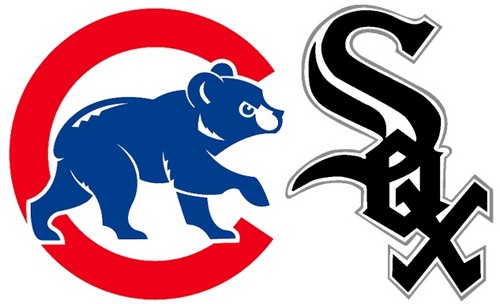 In 1929, uniform numbers appeared on the back of baseball jerseys for the first time, thanks to the Indians and the Yankees. By 1937, numbers finally appeared across all uniforms, both home and away, across both major leagues. Since that time, 81 distinct numbers have been worn by members of the White Sox, while the Cubs boast 76.
In 1929, uniform numbers appeared on the back of baseball jerseys for the first time, thanks to the Indians and the Yankees. By 1937, numbers finally appeared across all uniforms, both home and away, across both major leagues. Since that time, 81 distinct numbers have been worn by members of the White Sox, while the Cubs boast 76.
Today, we continue our look at those players, picking our favorite, if not the best, player to wear each uniform number for both Chicago teams with #42. 41 different players donned #42 while playing in Chicago, 18 for the White Sox and 23 for the Cubs, prior to its league-wide retirement for Jackie Robinson in 1997.
Ron Kittle made his major league debut for the White Sox, with #42 on his back, on September 2, 1982, pinch hitting for Aurelio Rodriguez and striking out in the White Sox 6-5 victory over the Rangers at Comiskey Park. Kittle got sporadic playing time over the final month of the season, earning just 29 at bats in 20 games while hitting .241 with a single home run. He broke out in a big way in 1983, earning an All Star nod and finishing the year with a team rookie record of 35 home runs while hitting .254 and driving in 100 as the White Sox notched their first division title. Kittle was knocked out of the ALCS against the Orioles after getting hit by a pitch in Game 3, finishing the series with just 2 hits in 7 at bats, but still easily earned Rookie of the Year honors.
1984 was a bit of a letdown for Kittle, as he failed to perform up to the expectations set the previous year, falling to a .215 average. His power numbers remained, as he clubbed 32 home runs, but his OPS was down by 70 points. There was a slight improvement in 1985, with his average improving to .230, but he hit only 26 home runs and drove in just 58 runs in 116 games. In 1986, Kittle was hitting .213 with 17 home runs at the trade deadline when he, along with Joel Skinner and Wayne Tolleson, were sent to the Yankees for Ron Hassey, Carlos Martinez, and a player to be named later. He re-signed with the White Sox prior to the 1989 season, but injuries limited Kittle to just 51 games and, in 169 at bats, he hit .302 with 11 home runs and 37 RBI. He returned in 1990, seeing his average drop to .245 with 16 home runs in 83 games when, again at the trade deadline, he was sent to the Orioles in exchange for Phil Bradley. Kittle returned for one final hurrah with the White Sox in 1991, signing as a free agent on June 19 before being released on August 15. In between, he appeared in 17 games and hit only .191 with 2 home runs.
On the north side, relief pitcher Bruce Sutter wore #42 during his 5 years with the Cubs from 1976 through 1980. Over that time, he piled up 4 All Star nods, numerous MVP votes, and a Cy Young Award. However, a lock down All Star closer is a luxury for a team that never managed to finish over .500 during those 5 years, so Sutter was dealt to the Cardinals in December of 1980, for Leon Durham, Ken Reitz, and Ty Waller.

